
If you want to stay safe and have a smooth ride on your MTB, then it’s important to know when to replace your tyres. If you don’t replace your MTB tyres at the right time, then you risk a number of pitfalls. The last thing you want is finding yourself getting frequent flats, losing grip or putting yourself at risk.
If you’re in a rush, then the key thing to note is that you should change mountain bike tyres if you notice holes, gaps, cracks in the tyre wall, blistering, worn knobs or a lack of traction. You should also change mountain bike tyres when they’ve lost 50% of their tread depth.
Knowing how long the mountain bike tyres last and how to change both your front and back tyre on a mountain bike is information well worth reading up on in more detail, though. And with the help of this guide, you’ll be able to avoid some of the nightmares you might otherwise face if you don’t change your MTB tyres when needed.
When to Replace Mountain Bike Tires
There are several key indicators that it’s time to change your mountain bike’s tyres. We’ve talked about them in detail, below.
What to Watch Out for:
Holes and Gaps

This one is a biggie. If you have visible holes in your MTB tyres or cuts down the side, then you have problems that need sorting pronto. Any cuts or gaps in the mountain bike tyres opens you up to the likelihood of sharp objects getting inside and, you know what that means – the dreaded flat mountain bike tyre.
Worn Knobs
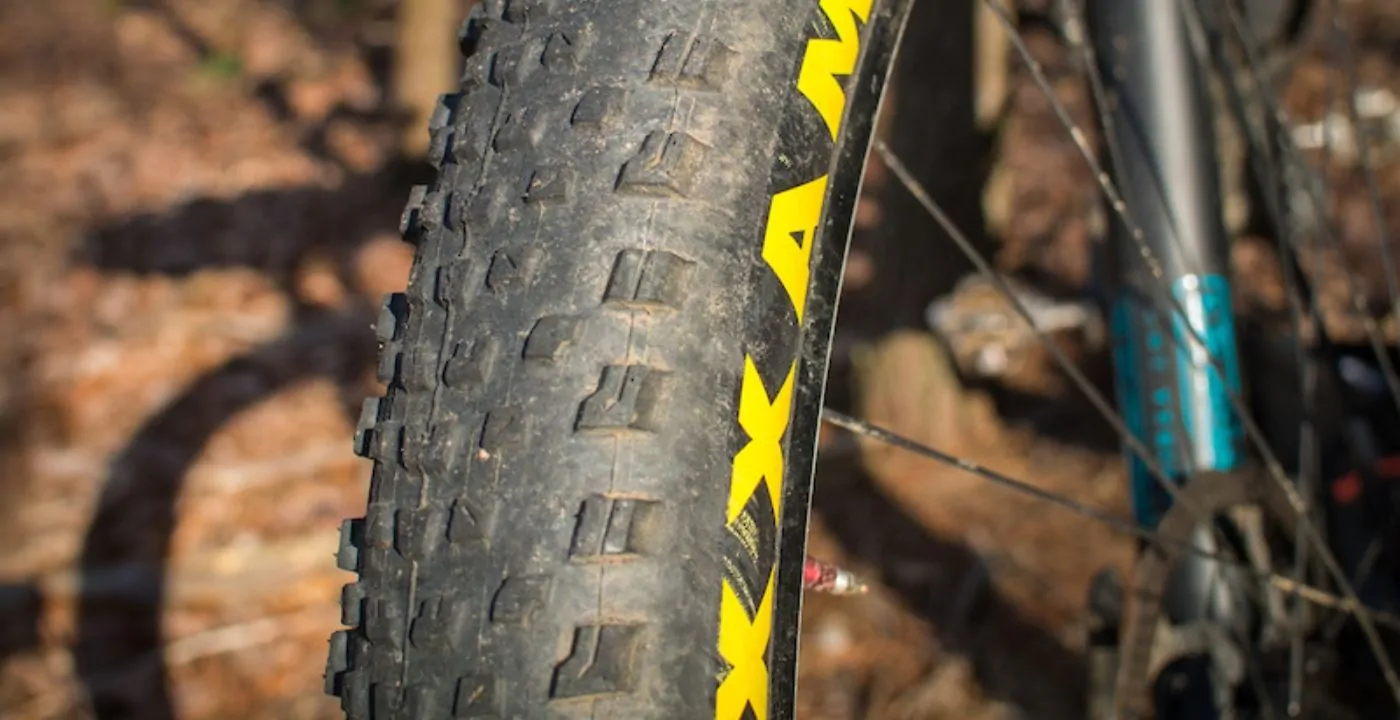
If the knobs on your MTB tyres begin to wear away and the tyres themselves begin to look flatter and smoother, then you have problems. You lose grip if the knobs are worn away and that means potential for crashes, lack of power and other issues.
Traction
If you’re finding that your wheels are spinning and aren’t gripping the pavement or trail, then that’s a real sign that your MTB tyres aren’t performing like they should be. Unless you’re on a seriously muddy trail then your mountain bike tyres should be hugging the ground and, if not, then you know it’s time to change your mountain bike tyres.
Blisters

If you begin to see bulges in your mountain bike tyre, which weren’t there when you bought them, then this indicates that your MTB tyre isn’t in good condition. Blisters and bumps in the tyre will lead to further problems, which is something we could do without. So, you know the drill – it’s time to change.
Cracks

If your mountain bike tyre begins to resemble scorched earth, with cracks down them, then you’ve got problems. Your MTB tyres should look like one solid object; if there are worn cracks then you’re, once again, opening yourself up to objects getting inside and raising the likelihood of punctures.
How Long Do Mountain Bike Tires Last?
Now this all depends on how much you use your mountain bike; if it’s tucked away in the garage all year round, then the chances of you needing to replace your MTB tyres are lesser compared with someone who’s out tearing up the trails every single week.
But, there are some important indicators you can use as a reference when assessing whether your mountain bike tyre is in good condition, or whether it’s ready to go:
Tread
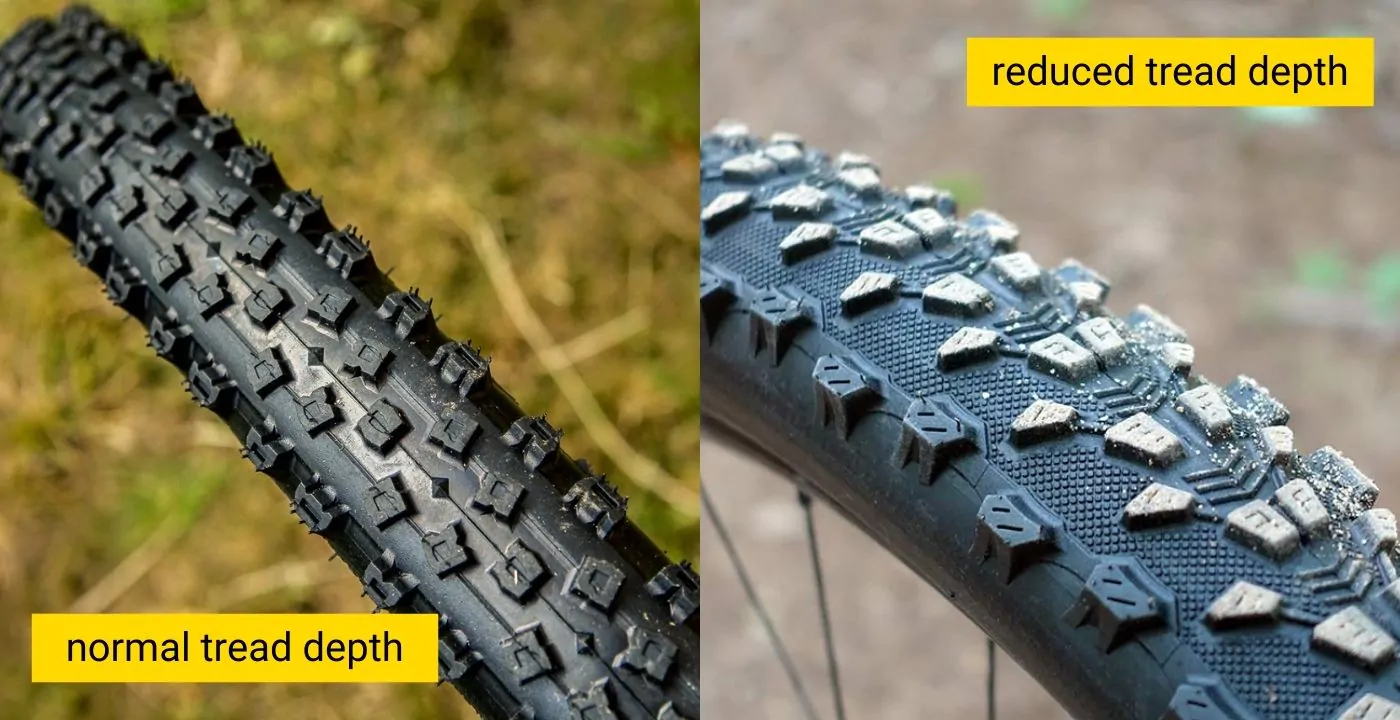
If your mountain bike tyre loses 50% of its tread depth and the knobs on your tyre have rounded edges, then you need to get those MTB tyres changed.
Mileage

The approximate distance mountain bike tyres usually last is between 3,000 and 8,000 miles. Now, clearly, this is a huge range, but it all depends on where you ride your MTB, how you ride your MTB, in what sort of weather conditions you ride, and how you care for and store your MTB after use.
Brand
Like with any product, some mountain bike tyres are made better than others. So, if you go for a cheap MTB tyre, then you may find it needs to be changed more quickly than a more expensive, better-made model. The sector is constantly evolving and you often find manufacturers competing to create the longest-lasting and most durable MTB tyres.
Why is it Important to Change Your Mountain Bike Tyres?
Safety
If you don’t change your mountain bike tyres at the right time then you could end up having a crash. Worn mountain bike tyres lose grip and as a result you can slide out whilst taking a sharp corner. The last thing you want is to end up in a ditch or in a hedgerow as you negotiate the trails.
Performance
You lose power if your MTB tyres aren’t gripping the ground properly. If your mountain bike tyres are badly worn, then you’ll find yourself exerting energy you really don’t need to. Simple rides become harder, therefore, and it will make keeping up with your pals that little bit more difficult.
Flats
There’s nothing more annoying on a mountain bike ride than having to sort out flat tyres. You’ll find yourself facing regular flats if you don’t replace your mountain bike tyres at the right time – this isn’t just time consuming, it’s costly, too, and can really disrupt a good day’s riding.
How to Change a Mountain Bike Tyre?
Practice makes perfect with this and it may not be the speediest change at first, but we hope our step-by-step guide will help you make the process as painless as possible:
1. Firstly, disconnect the mountain bike tyre you’re changing from the bike using the nuts and levers on either side of the affected wheel.

2. Once the bike is removed, let the air out the mountain bike tyre using the valve.

3. Using your fingers, loosen the bead of the tyre from its rim by applying force to the side of the rubber MTB tyre. Then work your way round the whole tyre using the same process.

4. Now that it’s loose, you may be able to get the MTB tyre off the rim using your hand, some might be harder and you may need to use tyre levers to ease it off the rim.
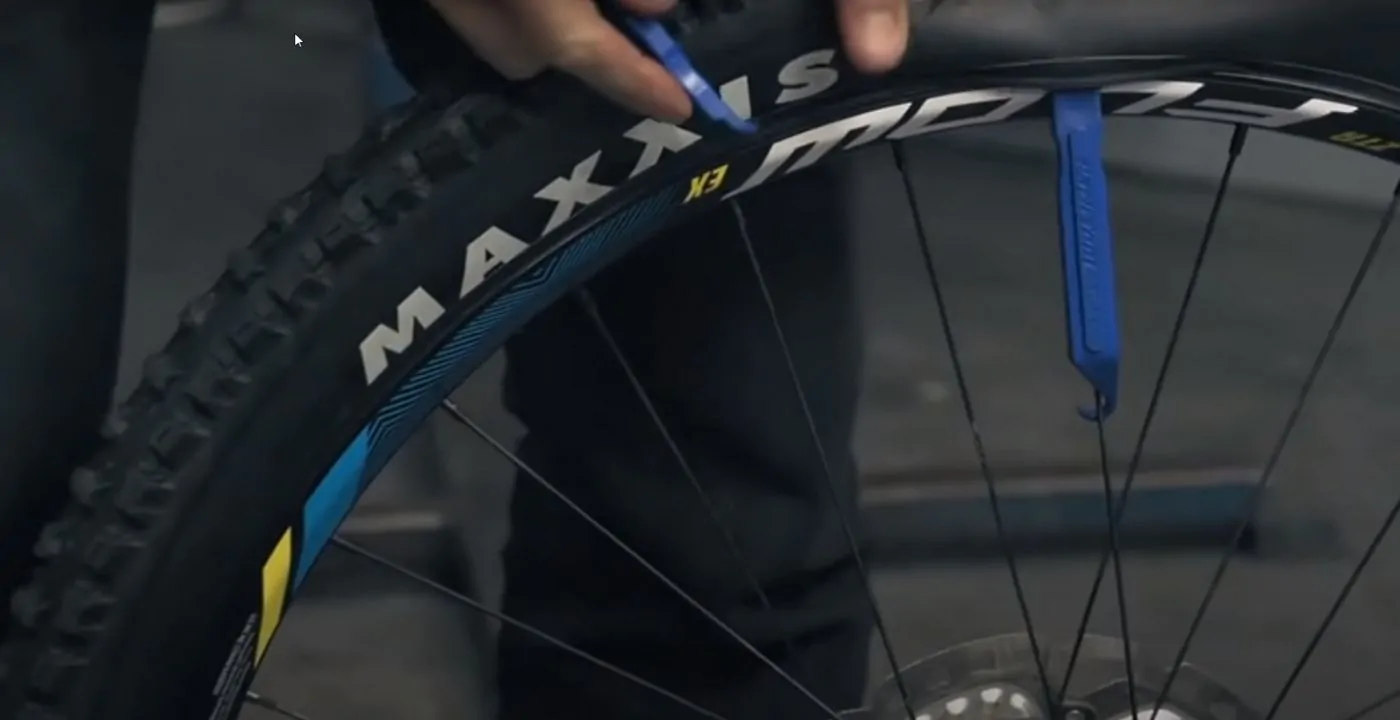
5. Remove the inner tube by pulling it out the rim with your hand. Once the tube is out you can then prise the MTB tyre away from the rim as well.
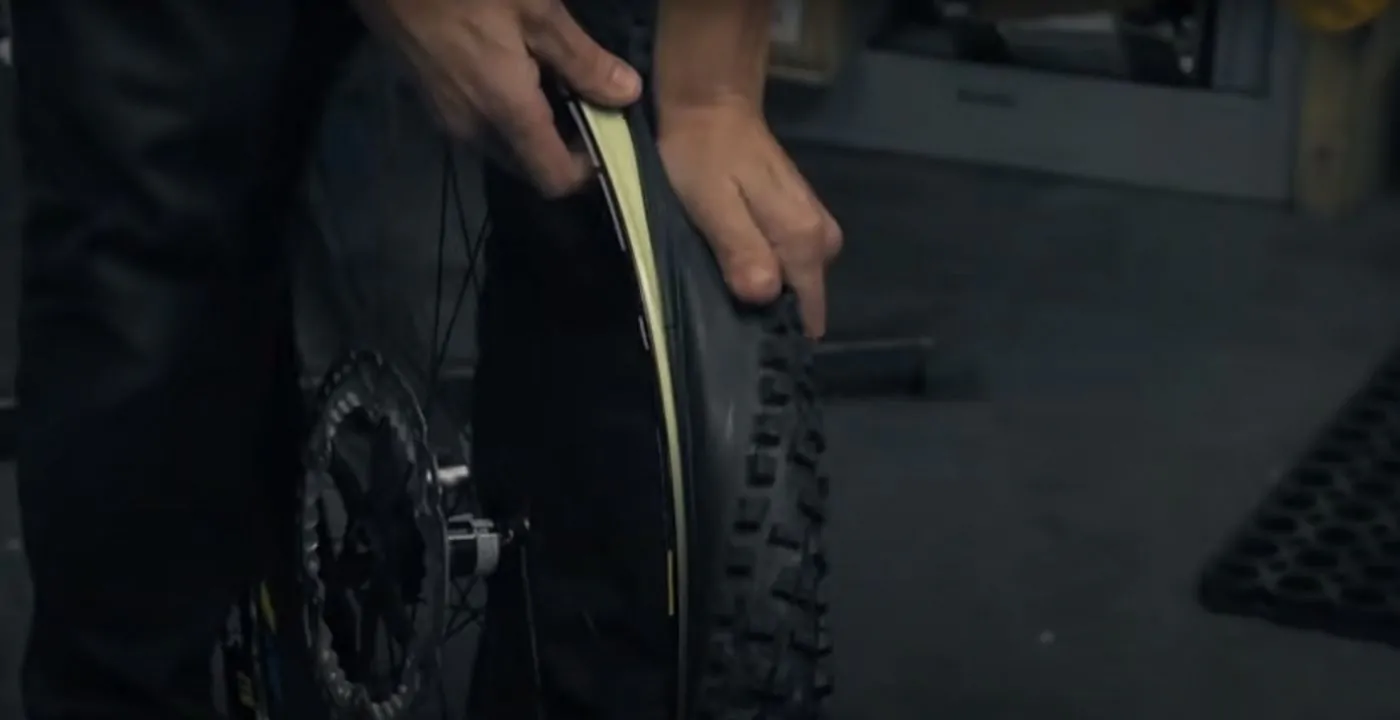
6. Right, now it’s time for the new tyre. Place the new tyre around the MTB tyre rim, using your hands to place the tyre bead into one side of the rim.

7. Once the tyre is beaded back on to the rim on one side, you can then place your inner tube back inside the new tyre and the rim.
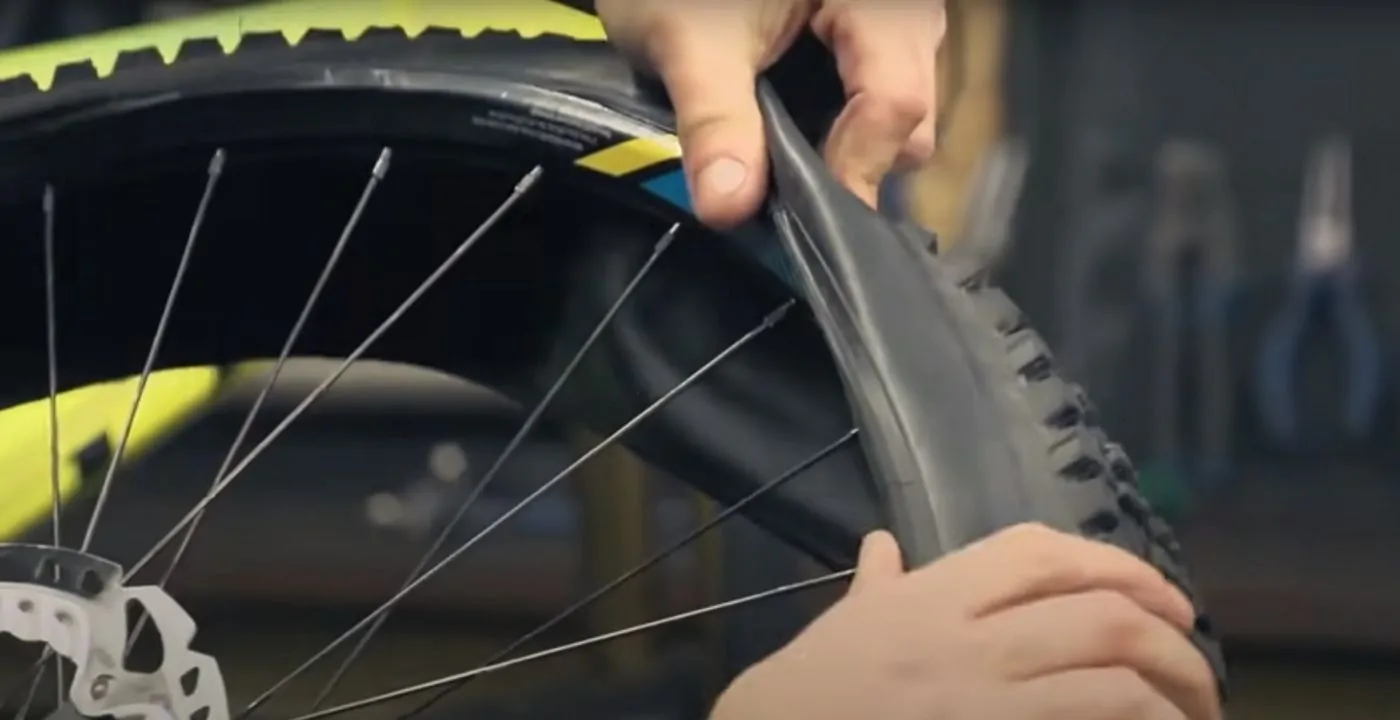
8. Once the inner tube is back inside the mountain bike tyre, you can then use your hands to prise the other side of the tyre onto the rim of your bike. Once the majority is on your will then need to use your tyre levers to complete the job.
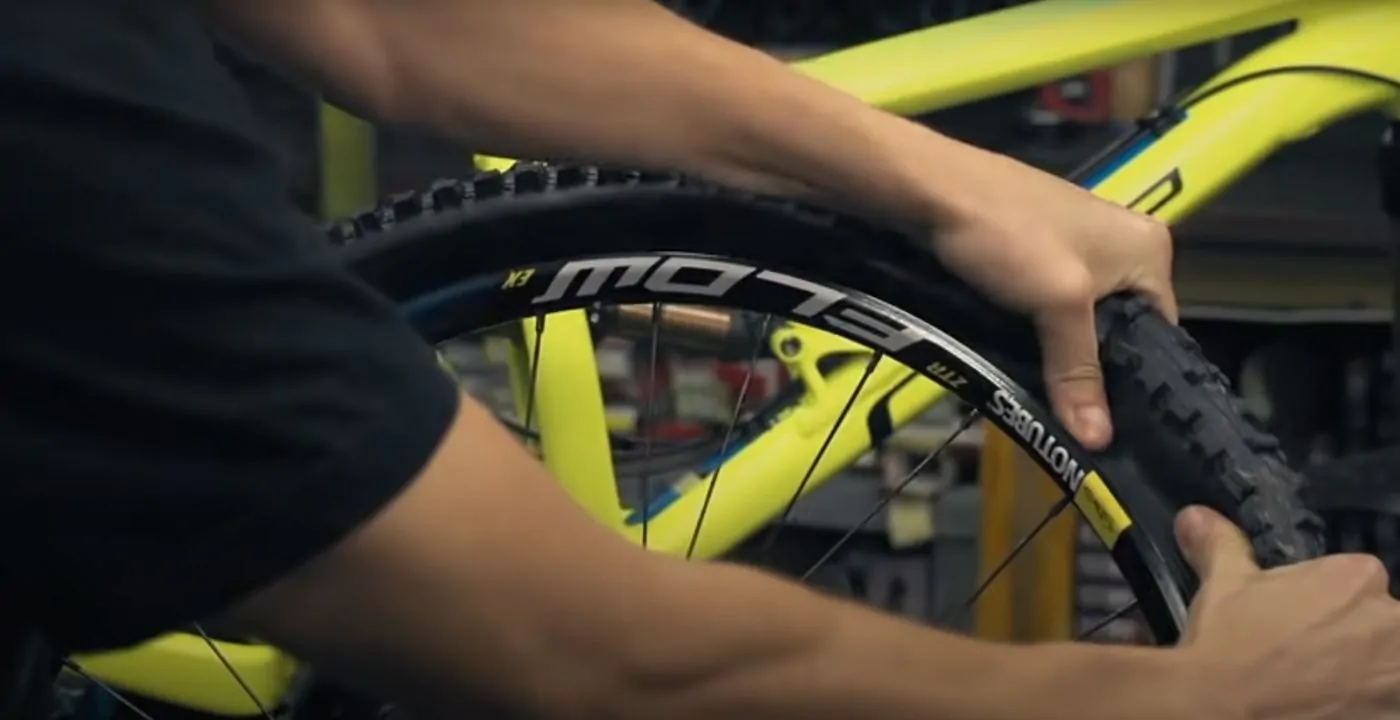
9. Once the tyre and inner tube are back on the rim you can then attach your tyre back to the bike, doing the reverse of the process that you carried out in Stage 1.
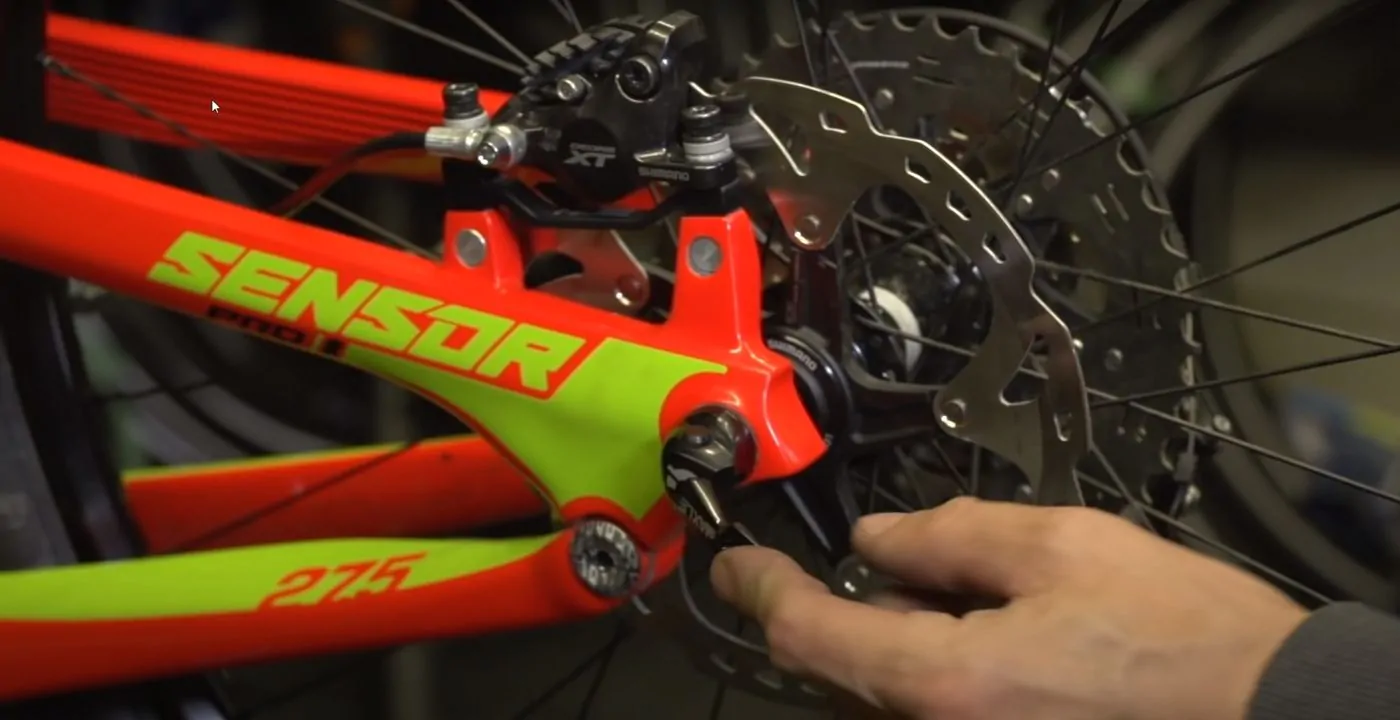
10. Finally, pump up your tyre using your pump and valve.
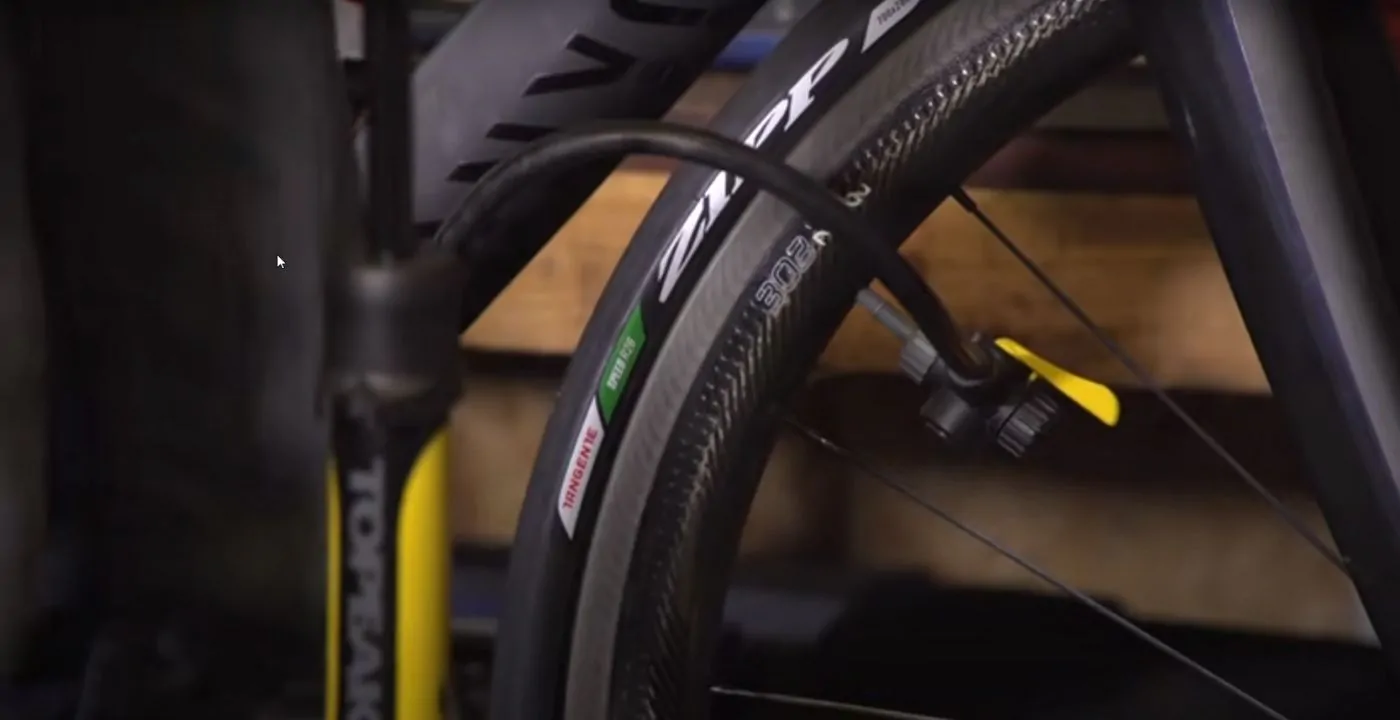
How to Change the Back Tyre On a Mountain Bike?
The process is very similar to the front tyre, but you have the added consideration of the chain.
1. Adjust your gears so that the chain is on the smallest ring (you don’t need to do this with the front tyre).
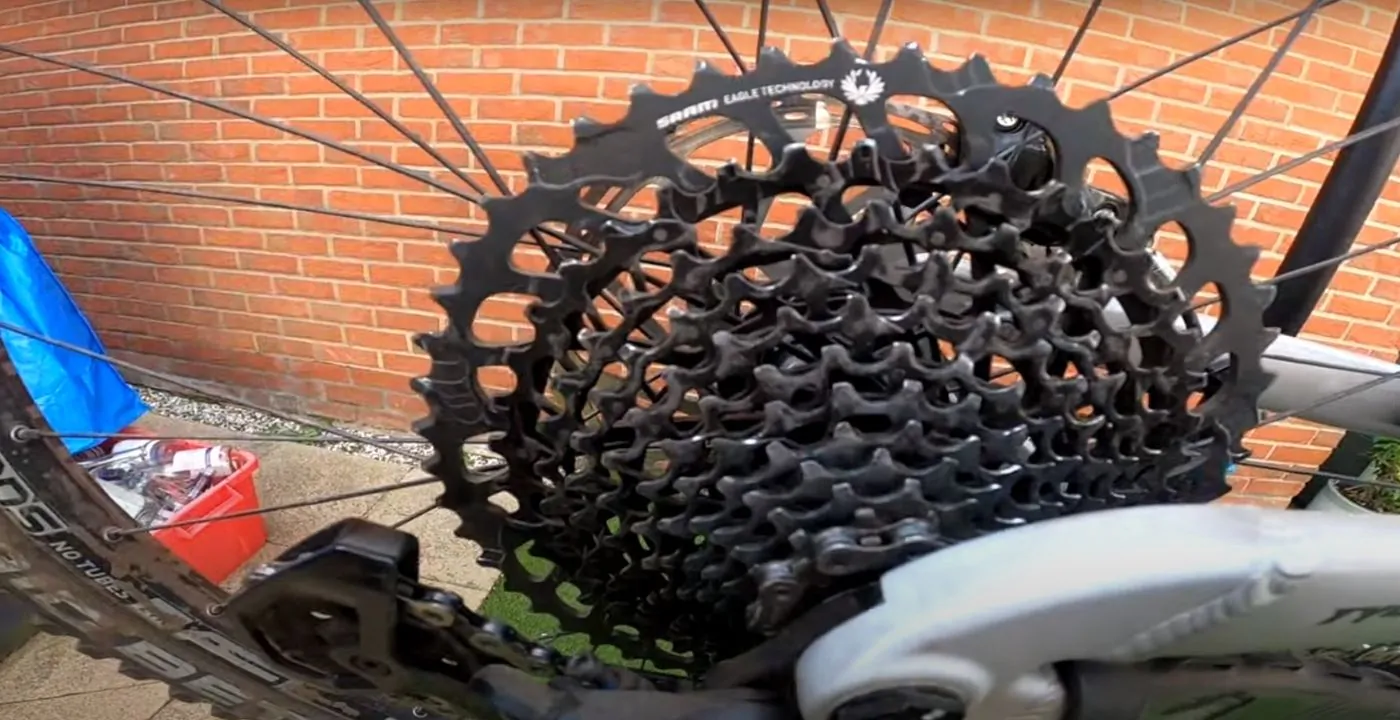
2. Turn your bike upside down or place it on a stand.
3. Loosen the nuts and levers on either side of the wheel (like you do with a front tyre).
4. On some mountain bikes once you loosen the nuts and levers it releases the brakes, on others it doesn’t, so you will have to manually use another lever above the brakes to release them.
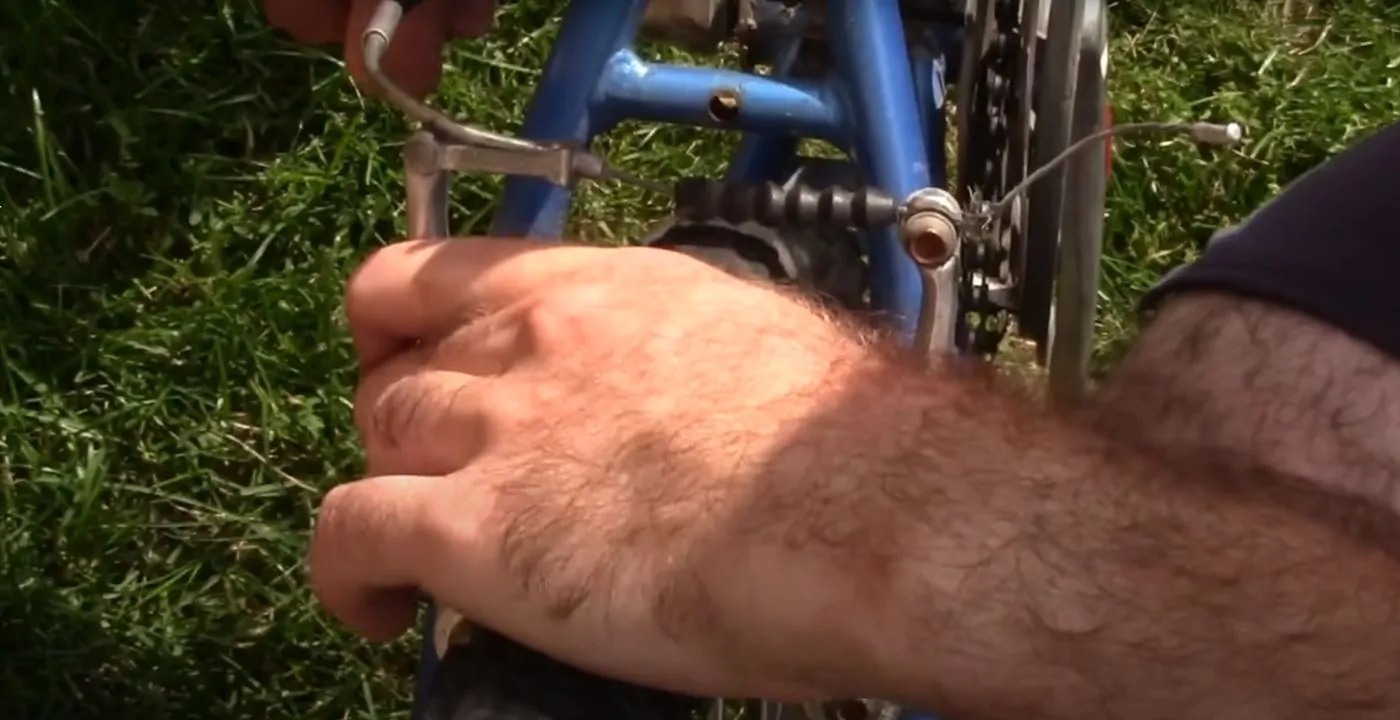
5. Pull the rear derailleur back slightly and the wheel should then slip out nicely from the chain and derailleur.

6. Removing the inner tube and tyre from the rim is exactly the same process as the front tyre (please see our detailed explainer above).
7. To place your new back tyre and wheel back onto the bike, carry out the reverse process of step 5. Place the wheel back in the chain, with it looping the underside and then place it into the rear derailleur.

8. The reverse process of step 3 – tightening nuts and quick release levers.
9. Give the wheel a spin to make sure it’s in properly and the chain is catching ok.
Job’s a good’un, you can now ride away into the sunset!
Final Thoughts
It’s important to change your mountain bike tyres to ensure your MTB is performing to the best of its abilities. If not, you could have an unnecessary crash, regular punctures or just find the bike struggling.
You need to be watching out for any holes or gaps in the tyres, worn knobs, cracks, blisters or any big change in traction/grip. Another good indication is whether your tread depth has reduced by 50%. The style of riding you are doing and how often you ride will determine how quickly you may end up needing to change them.
Pavements and roads wear away mountain bike tyres far quicker than a soft muddy path, similarly jagged edges on sharp rocky trails will also create more impact and more change of damage.
If you want to find out more about mountain bikes, then why not check out our other blog posts and guides?
Happy riding.




